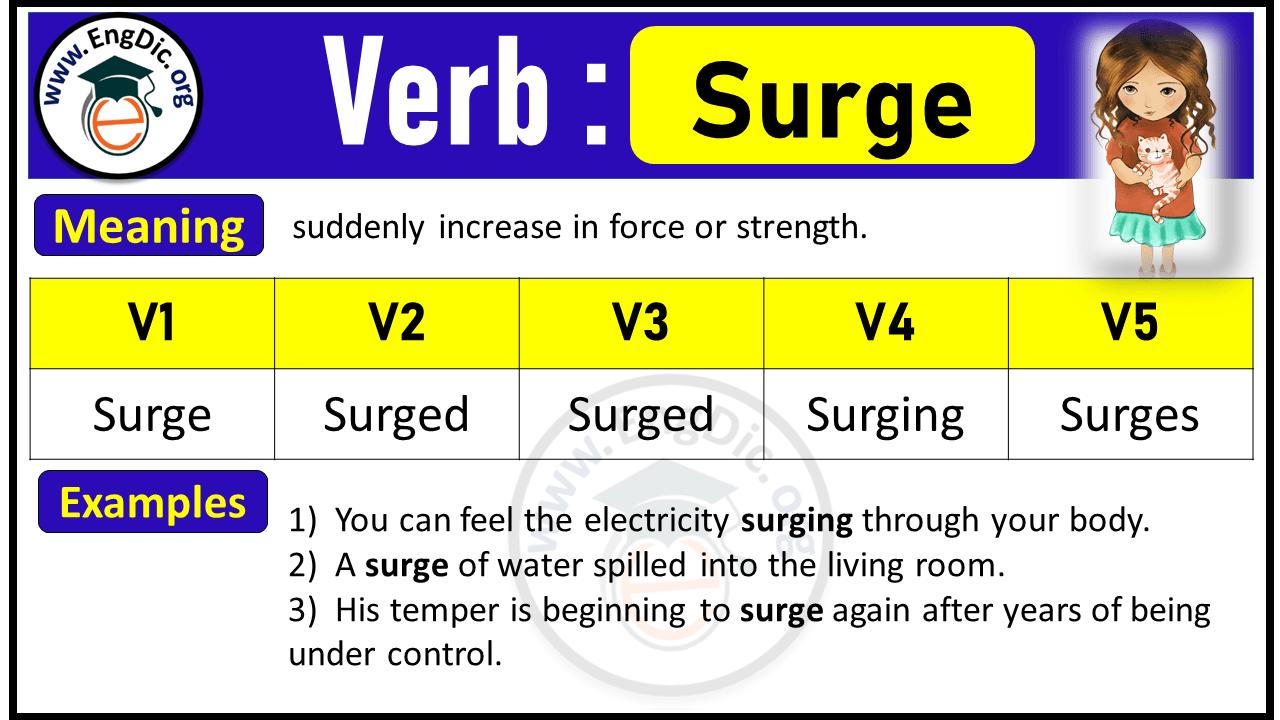Surge Past And Past Participle Form V1 V2 V3 V4 V5 Form of Surge
Are you curious about mastering English verbs and their various forms? Understanding the different verb forms can be a game-changer in enhancing your language skills.
Today, we dive into the verb “surge” and its various forms: V1, V2, V3, V4, and V5. This isn’t just about grammar; it’s about empowering your communication. Imagine expressing yourself with confidence and clarity, whether you’re crafting an email, writing a story, or having a conversation.
By the end of this article, you’ll not only know the forms of “surge” but also how to use them effectively, making your English more dynamic and engaging. Stick around, and let’s transform your language prowess together!

Credit: theenglishdigest.com
Surge: Definitions And Usage
The word surgemeans a sudden, powerful movement. It can be a rise in numbers or power. Surge has different verb forms. It’s used in different tenses. The base formor V1 is “surge”. The past tenseor V2 is “surged”. The past participleor V3 is also “surged”. The present participleor V4 is “surging”. The third person singularor V5 is “surges”. Using the right form is important. It depends on the sentence tense.
Surge in a sentence can describe many things. For example, “The crowd surgedforward.” This means they moved quickly. Another example: “Electricity surgedthrough the wires.” This means power increased. “The ocean is surgingwith waves.” This means waves are rising strongly. Use “surges” when talking about one person or thing. “He surgeswith energy every morning.” This shows his energy increase daily.
Conjugation Forms
The base form of a verb is its simplest form. For surge, the base form is “surge”. This is the form you use with “to” in infinitive phrases, like “to surge”. It’s also the form used with “I”, “you”, “we”, and “they” in the present tense.
The past simple form shows actions that happened before now. For surge, the past simple form is “surged”. You use this to talk about something that already surged. For example, “The crowd surged forward yesterday.”
The past participle form is used with “has”, “have”, or “had”. For surge, the past participle is “surged”. Use this in perfect tenses. Like, “They have surged past the finish line.”
Practical Applications
The word surgeis often used in everyday talk. People may say “a surge of energy” when feeling excited. “Surge of emotion” is another common phrase. It means a sudden strong feeling.
Here are examples using surge:
- The crowd surged forward.
- Electricity surged through the wires.
- He surged past the finish line.
These examples show surge in action. Use surge to describe sudden movements or feelings.

Credit: www.pinterest.com

Credit: engdic.org
Conclusion
Mastering verb forms enhances your English communication skills. The word “surge” offers diverse forms. From “surged” to “surging,” each form serves a unique purpose. Understanding these variations aids in constructing clear sentences. Practice regularly to improve fluency. Use these forms in everyday conversations.
This solidifies your grasp on the language. Remember, practice makes perfect. Regular usage builds confidence. Keep exploring different words and forms. This expands your vocabulary. Soon, expressing ideas will become effortless. Stay committed to learning and growing. Your English skills will surely improve with time and effort.






